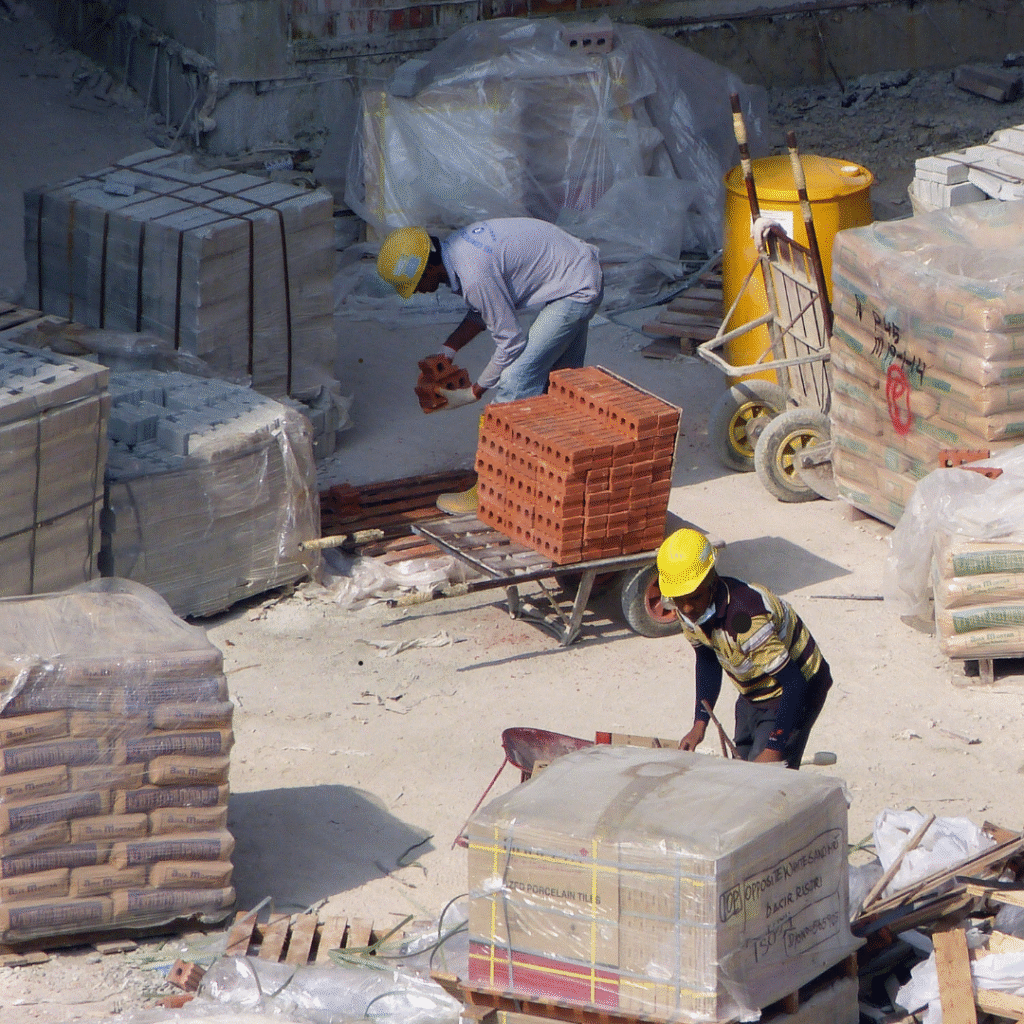
Get In Touch
Top 5 Safety Protocols Every Construction Site Must Follow in 2025
Construction sites are dynamic environments where heavy machinery, complex operations, and skilled labor converge to build residential, commercial, and industrial projects. While innovation in building design and techniques continues to evolve, the safety of workers and site visitors remains the top priority. As we step into 2025, it’s essential for construction companies like Shyam Constructions to adopt the latest safety protocols to ensure a secure and efficient working environment.
Here are the Top 5 Safety Protocols Every Construction Site Must Follow in 2025:
1. Advanced Personal Protective Equipment (PPE)
While PPE has always been mandatory on construction sites, the latest advancements now include smart helmets, wearable sensors, and smart vests that track worker health in real time.
Smart Helmets: These helmets are equipped with sensors that detect falls, temperature, and hazardous gas levels, sending instant alerts to the safety supervisor.
Wearable Health Monitors: Smart vests and wristbands monitor heart rate, body temperature, and fatigue levels to prevent accidents caused by exhaustion or heat stroke.
Implementing advanced PPE drastically reduces workplace injuries and ensures early intervention in hazardous situations.
2. Mandatory Site Safety Training and Certification
In 2025, regular safety training is no longer optional but a regulatory requirement. Every worker must undergo digital training modules covering:
Hazard identification
Equipment operation protocols
Emergency evacuation drills
Proper use of PPE
These interactive and scenario-based modules ensure workers are well-prepared for real-life challenges. Additionally, certification upon completion ensures accountability and up-to-date knowledge.
3. Real-Time Site Monitoring with IoT and Drones
One of the most significant breakthroughs in construction safety is the integration of IoT devices and drone surveillance.
IoT Sensors: Installed across the site, they continuously monitor structural integrity, ground vibrations, and environmental factors (e.g., gas leaks).
Drones: Equipped with high-resolution cameras and thermal imaging, drones provide aerial surveillance of the entire site, allowing supervisors to spot unsafe practices or structural issues without physical presence in risky areas.
These technologies allow for proactive risk management, reducing accidents before they happen.
4. Strict Access Control Systems
Unauthorized access to a construction site can lead to serious safety hazards. In 2025, biometric scanners, RFID cards, and automated turnstiles have become standard protocols to:
Ensure only trained personnel enter the site.
Maintain real-time attendance logs.
Prevent theft of materials and equipment.
This also enables contact tracing in case of health emergencies, an important lesson from recent global health challenges.
5. Emergency Response Preparedness with Digital Platforms
Every construction site must have a detailed emergency response plan that is accessible digitally.
Emergency Apps: Mobile applications now allow instant reporting of incidents, provide evacuation routes, and alert emergency services.
Digital Incident Logs: Every incident is documented in real time, helping improve safety practices by identifying recurring hazards.
Furthermore, regularly scheduled mock drills ensure that workers are familiar with procedures, reducing panic and confusion during real emergencies.
Conclusion
In 2025, construction safety is no longer limited to hard hats and steel-toe boots. It’s about smart integration of technology, continuous education, and strict enforcement of protocols.
At Shyam Constructions, we are committed to implementing these cutting-edge safety protocols across all our projects to protect our workforce, reduce downtime, and deliver projects safely and efficiently.
By prioritizing safety today, we are building not just structures, but trust for tomorrow.

